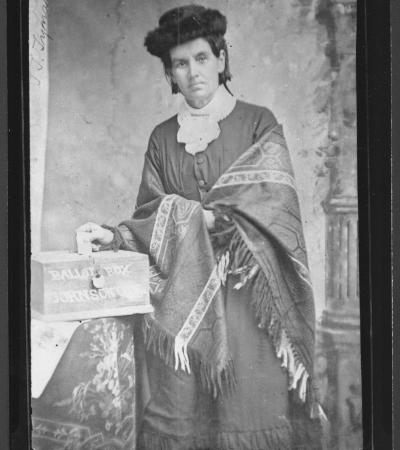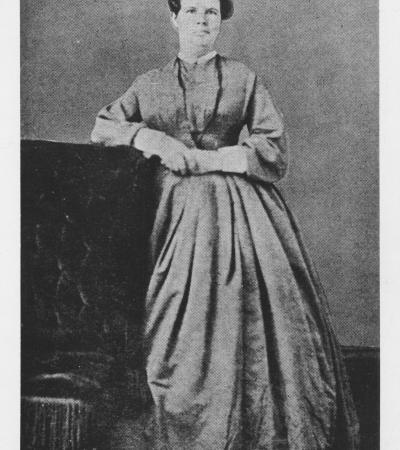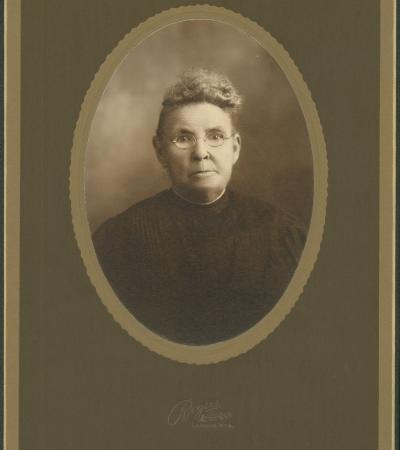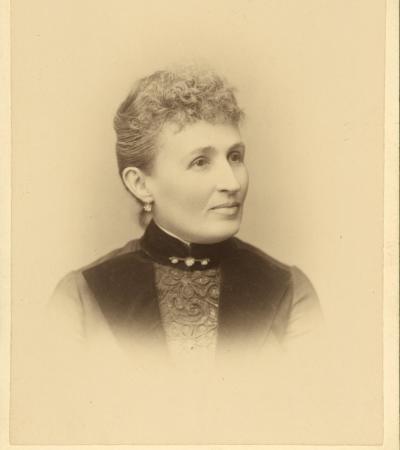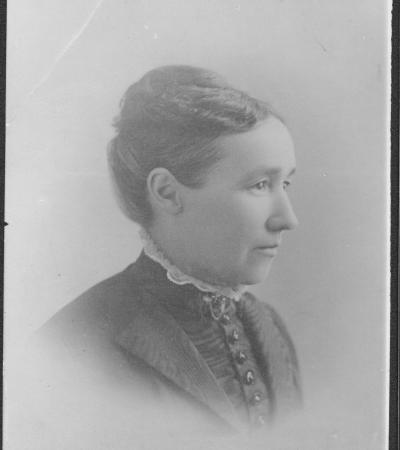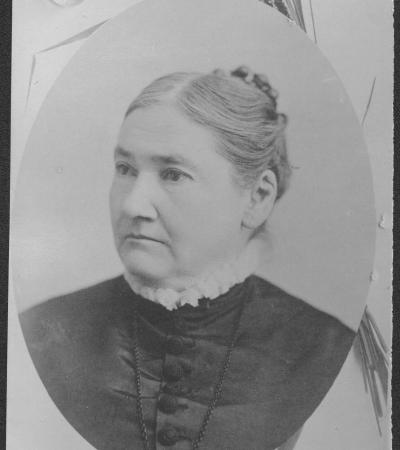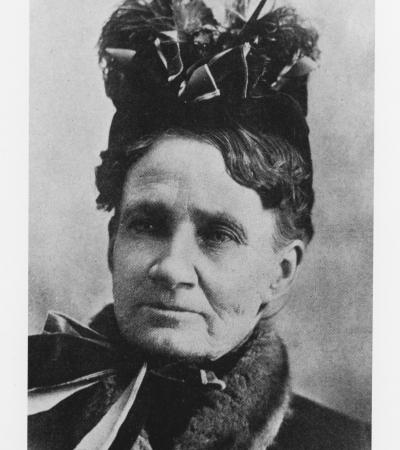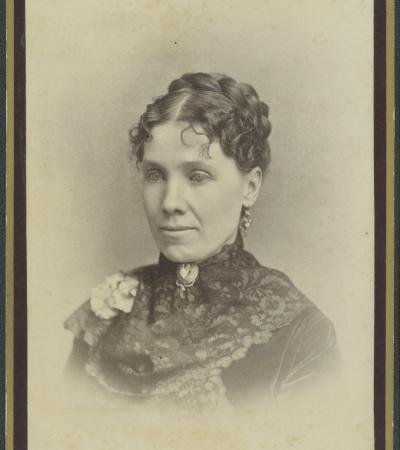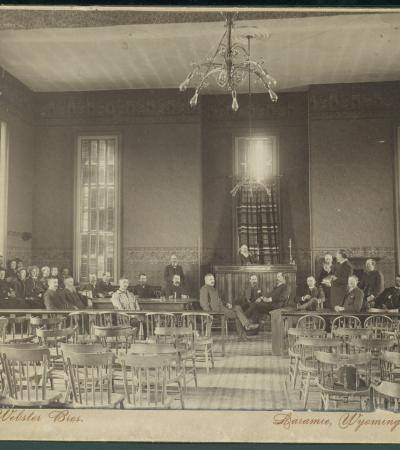The American Heritage Center houses vertical files that provide valuable research materials on topics and people. Each vertical file contains items such as news clippings, booklets, photographs, pamphlets, reports, and more. The materials are typically loose, separate pieces organized in folders and arranged by subject. The name comes from how they are stored: vertically in filing cabinets. The vertical files represented here relate to women’s suffrage.
Dr. Delilah S. Turner Sonnesberger commemorating the right for women to vote.
Dr. Sonnesberger (1828-1890) became a widow at 20 while in Illinois. She began to study and train as a physician. She married again in 1851 and had seven children. Her family moved to Johnson County, Wyoming, in 1878. She cast the first women's ballot there in the 1880s.
Eliza Stewart Boyd, ca. 1870
In March 1870 (1833-1912) Boyd became the world's first woman selected for jury duty. The grand jury indicted Andrew Howie for murder; later that month, she and five other women were jurors in his criminal trial. Boyd graduated in 1861 as a teacher and taught school in Pennsylvania before moving to Laramie in 1868. She became the first teacher in Laramie public schools. In 1870, she married Union Pacific machinist Stephen Boyd.
Eliza Stewart Boyd, ca. 1905
Boyd was nominated for the Territorial Legislature in 1873, although she declined to run. In 1888 she was selected as one of two Wyoming delegates to the Prohibition Party's national convention in Indianapolis.
Agnes Chase Baker, ca. 1892
Baker (1844-1918) of Laramie was one of the women selected to serve on the first jury to include women in March 1870. But she was dismissed upon her request. She and her husband Valentine Baker had moved from Sheridan to Laramie in 1870, and then moved to Cheyenne in the latter 1880s.
Sarah Wallace Pease, ca. 1870
Pease (1840-1909) came Laramie in 1869 with her husband, attorney (later judge) Lorenzo Dow Pease. She was also one of the first women to serve jury duty when she replaced Agnes Chase Baker. She was elected superintendent of public schools in 1892 and served two terms. She was the only member of that first grand jury who wrote a firsthand account about it.
Mrs. I. M. Hartsough, undated
Hartsough served on the March 1870 criminal or “petit” jury in Laramie to try Andrew Howie for murder. The jury voted unanimously to convict Howie.
Martha Symons Boies, ca. 1900
Boies (1830-1917) served as a bailiff for the first grand jury that included both men and women in March 1870. The jury was called upon to spend a night in a hotel due to a long court session. Given the sensitivity of women being on a jury, Judge John Howe selected a woman, Mrs. Boies, to guard their rooms.
Amelia Hatcher Heath, ca. 1870
Hatcher (1842-1921) and her young son moved in with her father in Laramie following her husband's death. She was one of the women who in March 1870 was called to serve on that first formal jury in the world to seat women. In December 1871, she was one of 30 women to sign a petition addressed to the Wyoming Territory Legislative Assembly arguing that the 1869 Suffrage Act should be preserved in the face of an attempt by the assembly to overturn the act.
Mock trial at Laramie courthouse, 1887
Judge Jacob B. Blair re-enacted the scene of the first woman jurors in his Laramie courtroom. Women are seated at left in the front row of the jury box. Lawyer Melville C. Brown, the tall man at right looking at the judge, initially opposed jury service by women but later changed his mind.
